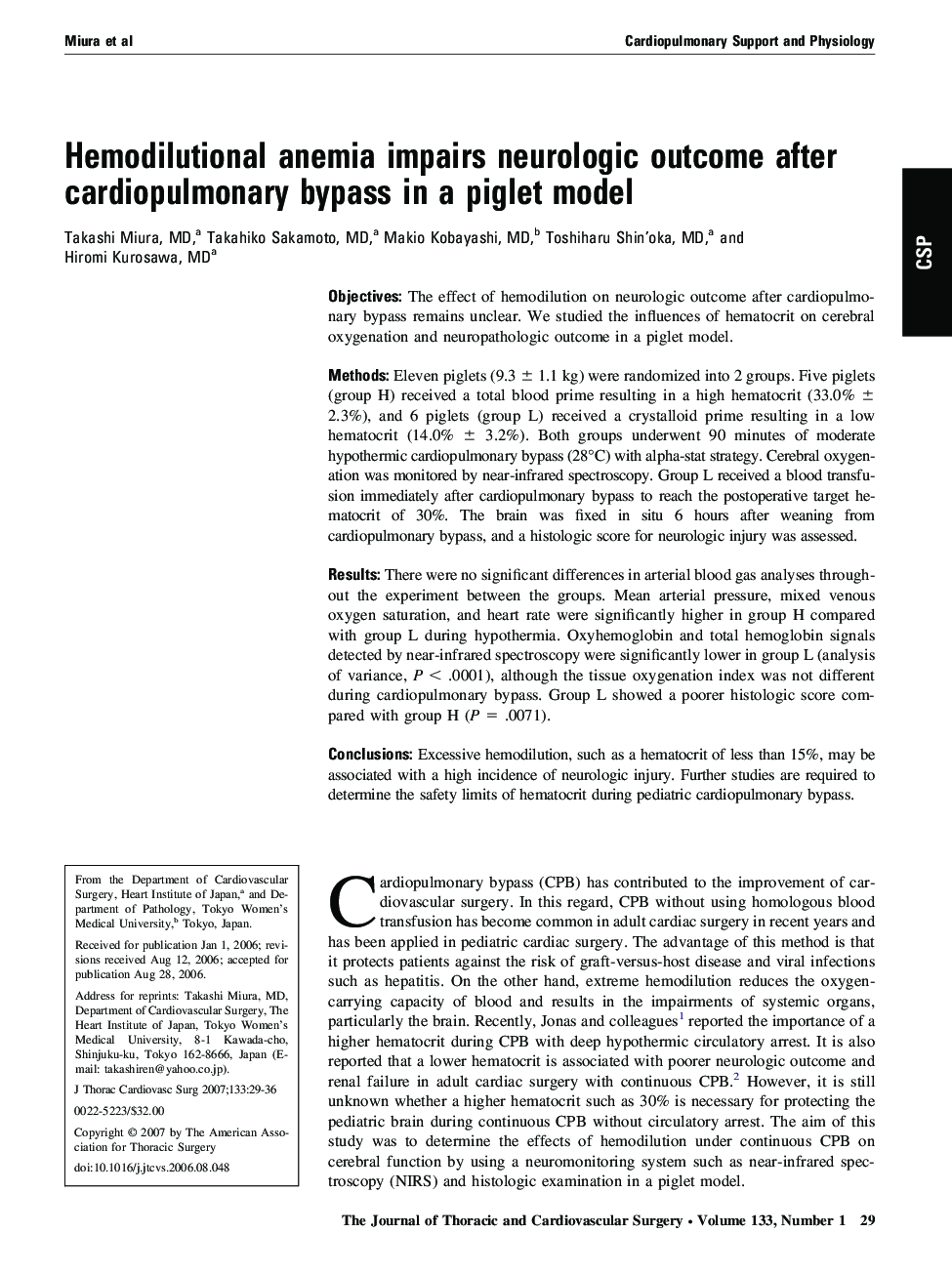| Article ID | Journal | Published Year | Pages | File Type |
|---|---|---|---|---|
| 2984849 | The Journal of Thoracic and Cardiovascular Surgery | 2007 | 8 Pages |
ObjectivesThe effect of hemodilution on neurologic outcome after cardiopulmonary bypass remains unclear. We studied the influences of hematocrit on cerebral oxygenation and neuropathologic outcome in a piglet model.MethodsEleven piglets (9.3 ± 1.1 kg) were randomized into 2 groups. Five piglets (group H) received a total blood prime resulting in a high hematocrit (33.0% ± 2.3%), and 6 piglets (group L) received a crystalloid prime resulting in a low hematocrit (14.0% ± 3.2%). Both groups underwent 90 minutes of moderate hypothermic cardiopulmonary bypass (28°C) with alpha-stat strategy. Cerebral oxygenation was monitored by near-infrared spectroscopy. Group L received a blood transfusion immediately after cardiopulmonary bypass to reach the postoperative target hematocrit of 30%. The brain was fixed in situ 6 hours after weaning from cardiopulmonary bypass, and a histologic score for neurologic injury was assessed.ResultsThere were no significant differences in arterial blood gas analyses throughout the experiment between the groups. Mean arterial pressure, mixed venous oxygen saturation, and heart rate were significantly higher in group H compared with group L during hypothermia. Oxyhemoglobin and total hemoglobin signals detected by near-infrared spectroscopy were significantly lower in group L (analysis of variance, P < .0001), although the tissue oxygenation index was not different during cardiopulmonary bypass. Group L showed a poorer histologic score compared with group H (P = .0071).ConclusionsExcessive hemodilution, such as a hematocrit of less than 15%, may be associated with a high incidence of neurologic injury. Further studies are required to determine the safety limits of hematocrit during pediatric cardiopulmonary bypass.
